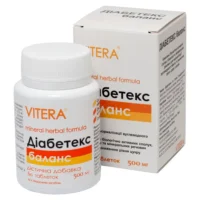Description
Sindjardi (Emagliflosin, Metformin Hydrochloride) Coated Tablets 12.5 mg/1000 mg. №60
Ingredients:
Each coated tablet contains 12.5 mg of emagliflosin and 1000 mg of metformin hydrochloride.
Dosage:
The recommended dosage is one tablet taken orally twice daily with meals.
Indications:
Sindjardi coated tablets are indicated for the treatment of type 2 diabetes mellitus. It helps control blood sugar levels and improve insulin sensitivity.
Contraindications:
Do not use Sindjardi tablets if you have severe kidney disease, metabolic acidosis, or a history of lactic acidosis. Consult your healthcare provider before starting this medication.
Directions:
Take Sindjardi tablets exactly as prescribed by your doctor. Do not exceed the recommended dosage. It is important to follow a healthy diet and exercise regimen while taking this medication.
Scientific Evidence:
Studies have shown that the combination of emagliflosin and metformin hydrochloride in Sindjardi tablets can effectively lower blood glucose levels in patients with type 2 diabetes. Emagliflosin, a sodium-glucose cotransporter-2 (SGLT2) inhibitor, works by blocking glucose reabsorption in the kidneys, leading to increased glucose excretion in the urine. Metformin reduces glucose production in the liver and improves insulin sensitivity in peripheral tissues.
Clinical trials have demonstrated the superior efficacy of emagliflosin and metformin combination therapy compared to either drug alone. The dual mechanism of action of these medications provides better glycemic control and may reduce the risk of cardiovascular complications in diabetic patients.
Additional Information:
- Storage: Keep Sindjardi tablets in a cool, dry place away from direct sunlight.
- Side Effects: Common side effects may include gastrointestinal upset, dizziness, and hypoglycemia. Contact your doctor if you experience any severe or persistent side effects.
- Pregnancy and Lactation: Consult your healthcare provider before using Sindjardi tablets if you are pregnant, planning to become pregnant, or breastfeeding.





